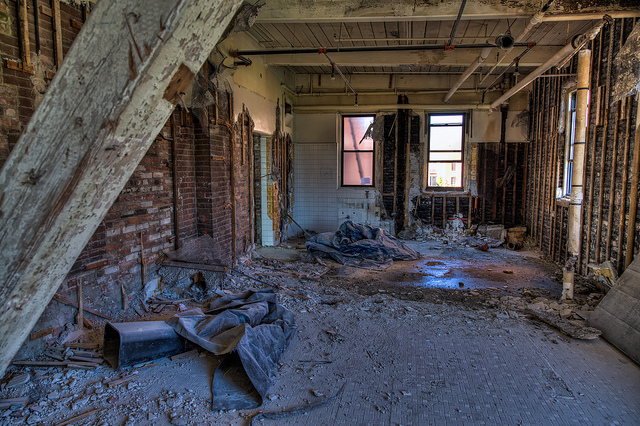Pros vs. Cons of Redecking Your Boston Triple Decker
Replacing an existing deck would seem to be an easy way to capture a little fresh air and enhance your quality of life in the precious summer months, but if you’ve got a triple decker, things can get complicated pretty quickly. Most triple deckers were designed with porches on the front to give residents a taste of the good life of the suburbs with their own piece of the great outdoors. Unfortunately, many of these structures were built with steel posts that, 100 years on, aren’t holding up. A deck off the back is likely to be somewhat newer and perhaps in better shape, though it’s still a good idea to inspect the structure to make sure that the footings and supports are all in good enough shape to support the weight of three decks.
This leaves Boston homeowners and landlords with one big question: Is redecking a Boston triple decker deck a good idea? There are pros and cons to consider, and they become three times as important when it comes to your triple decker.
The Pros of Redecking
- Redecking Might Be Cheaper. If your existing porch or deck has a sound structure, swapping out old deck boards and railings for new ones could be significantly cheaper than redoing all the footings, joists and structural bits. These savings are multiplied when it comes to second- and third-story work, since replacing structural members is more expensive for the additional height and weight.
- Redecking Can Reduce Your Maintenance. If your deck’s structure is in good shape, redecking with composite materials instead of wood can be a great investment. These materials are far more waterproof and will last for years without rotting, as wood is prone to do. Choose a color and style you love, and you’ll be able to enjoy the look without worrying about re-painting or staining each spring.
- Redecking Isn’t as Weather-Dependent. If you don’t have to replace the foundation of your deck, you can do the work while the ground is frozen if you want. While you might not choose to work in the cold, it’s good to know that you can get an early start on the project in the spring or wrap up work later in the fall or even December if something comes up.
The Cons of Redecking
- You’re Locked In to Your Design. When you keep the structural portions of your deck intact, you’re agreeing to live with the same layout of your deck, just with a new color or material. If you’re not satisfied with how it functions, you’re better off replacing it with a new design.
- Codes Change. if you’re dealing with an original porch, it probably didn’t have to meet any codes at all. Even a new back deck may no longer meet today’s structural expectations. Check with a structural engineer or a knowledgeable contractor to see if your footings are below the frost line and your joists are properly spaced. If not, you won’t be able to use your old structure for redecking.
- Sometimes Damage Is Hidden. Even if your structure looks good to the naked eye, you may find hidden rot as you demo your old decking. In this case, you may have to do a full replacement anyway. Make sure your budget allows for this possibility so you don’t get stuck with half a deck.
Redecking can be labor-intensive, but the potential for saving money on your triple decker remodel is very tempting. Be sure to do your homework about your deck’s structure to make sure this is a good option for you before you dive into your project. If you need to replace the foundation, a whole new deck is almost always a better investment.

